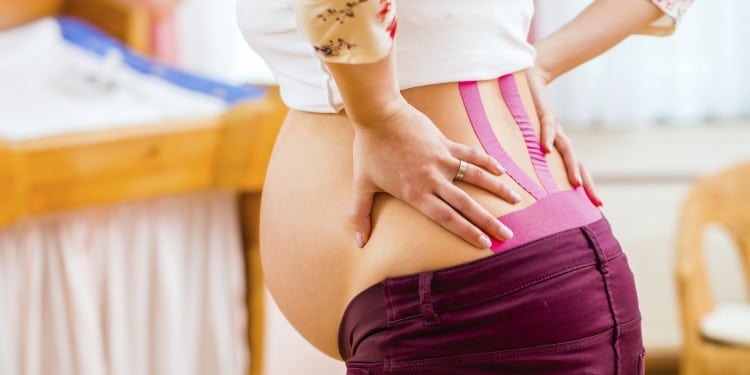Lower-Back Causes and Safe Treatments during Pregnancy

Over half of pregnant women develop lower-back pain into their third trimester. For the longest time, it was believed that the cause of this is the same as for age-related low-back pain. This means the change in lumbar curvature. New studies show this might not be the case. The treatment for the pain, however, remains the same, with massage and exercise being the most efficient options.
Lower-Back Pain Causes in Pregnant Women
Traditionally, lower-back pain is caused by changes in lumbar curvature. There are some studies that support this belief (Journal of Physical Therapy Science). However, even those don’t show any concrete evidence of spinal deformation.
The most recent study from Valencia University might explain why that is so. The reason is that this is not the cause of lower-back pain in pregnant women. This research determined that the feeling is a result of the changing neuromuscular activity. Simply put, your spine doesn’t curve to accommodate the added weight of the fetus. However, your muscles do. They work harder in some areas and take on more load on the muscles that usually don’t engage in such activities. The result is the pain pregnant women feel.
This latest study is extremely important because by understanding the origin of pain better, health care professionals will be able to develop more effective treatments. In this particular case, you might need to change some exercises used to relieve the ache.
Lower-Back Pain in Pregnant Women: Natural Treatments
Painkillers are definitely not an option when you need to deal with lower-back pain while pregnant. In fact, they never resolve the problem. Therefore, you should always seek a true treatment that will cure the cause of the pain. In this case, the most effective tool is physical therapy. You can learn more about the practices best suited for pregnant women if you click here. You should also talk to your doctor before starting a program as they have a better insight into your current condition and can determine which options are safest for you.
Regular exercise and massage are the best treatments available today. But the study mentioned above indicates that the modern approach to dealing with low-back pain in pregnant women might change soon. If will still heavily rely on exercise. However, those will be workouts that aim to relax overworked muscles, not strengthen and ‘unbend’ your spine.
The good news is that many of the regular exercises recommended for pregnant women already do a good job of muscle relaxation. That’s why they work for relieving some pain. The trick for physical therapists is to use the new data to develop even more effective routines.
Aside from exercising, treatments for lower-back pain in pregnant women include:
- Massage.
You should only take massage from a professional experienced in working with pregnant women. This will minimize risks to the baby. As you will only be able to get a very light massage, this method brings relief only for a very short time. - Acupuncture.
Acupuncture is riskier than massage, so be sure to only get your treatments from a certified professional with impeccable reputation and papers. The efficiency of acupuncture in relieving low-back pain is debatable at best. It does seem to help some people, so it’s an option you can consider. But only if you are 100% sure in the person performing the treatment.
Some women also use herbal remedies for pain relief, but those are best avoided until you give birth.
You can also reduce the pain by making a few changes to your lifestyle:
- Squat to pick things up.
Bending puts a big strain on your back muscles, so use your legs instead. Try to keep your back straight at all times. Good posture is important for everyone and you’ll definitely feel its benefits most keenly during pregnancy. - Wear proper clothes, shoes, and a support belt.
Wearing maternity clothes that fit and comfortable no-heels shoes is essential to feel comfortable during pregnancy by default. The shoes are particularly important for lower-back pain prevention. The effectiveness of maternity support belts is widely debated (Journal of Clinical Nursing). You should try wearing one and see if it works for you. - Sleep on your side.
Sleeping on your back will put too much pressure on it and is sure to cause discomfort. Use pillows to cushion your body to get more comfortable while on your side.
Exercise daily.
You need to strengthen your muscles to reduce lower-back pain during pregnancy. This means you have to exercise them as often as possible. This means not only doing specialized workouts for pregnancy. You should also walk more and turn daily chores into mini-workouts. But be sure to consult your doctor about any physical exercise you plan to try.
